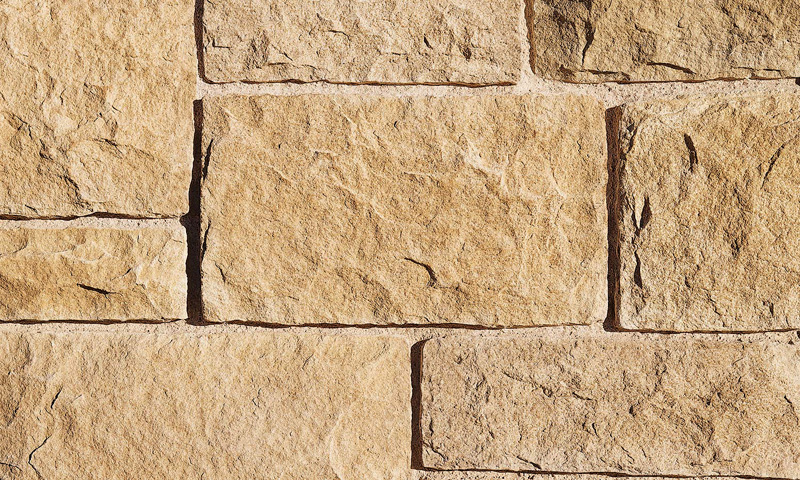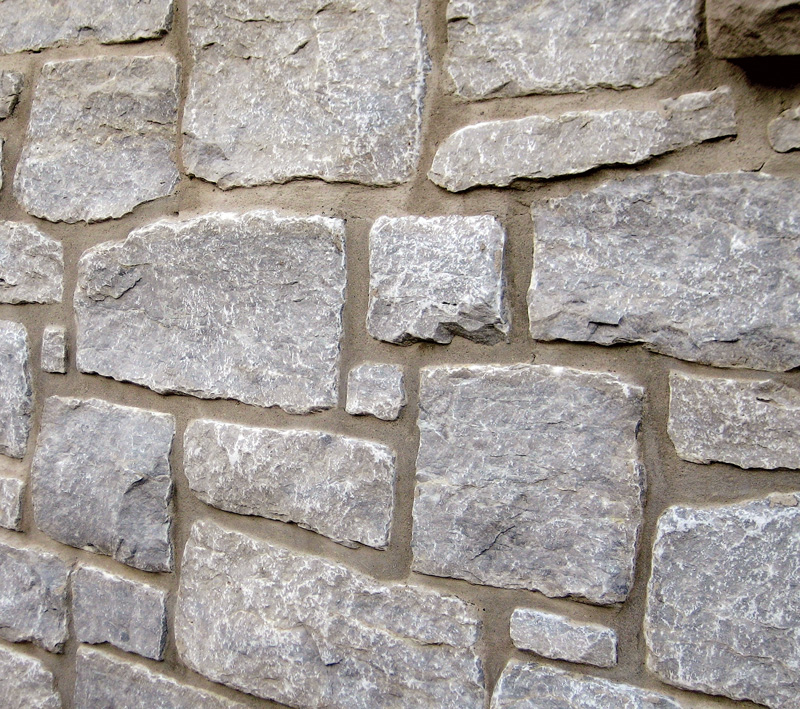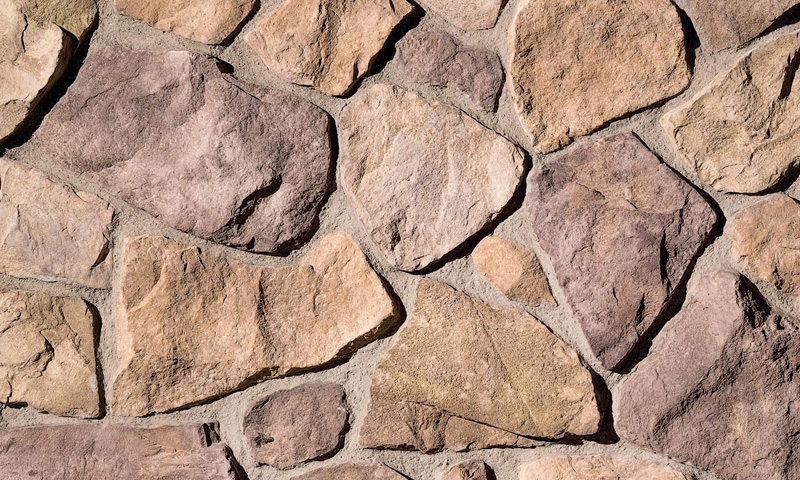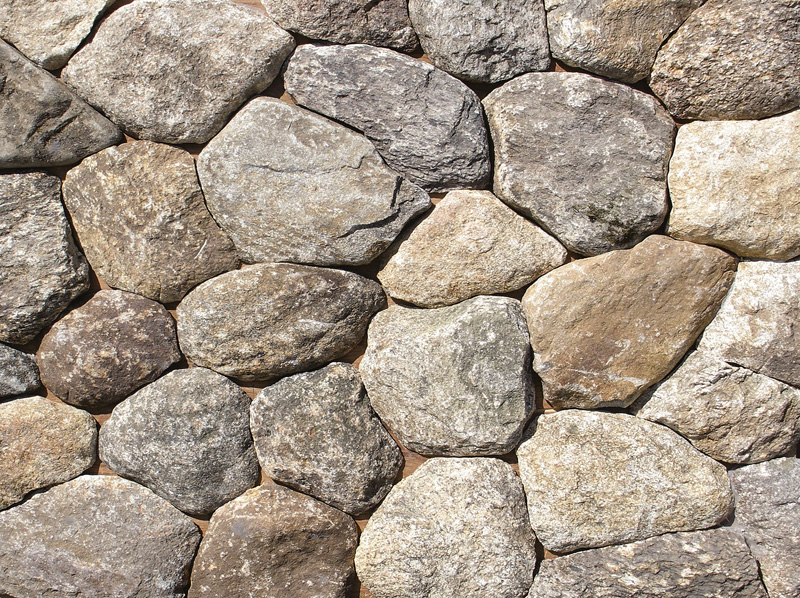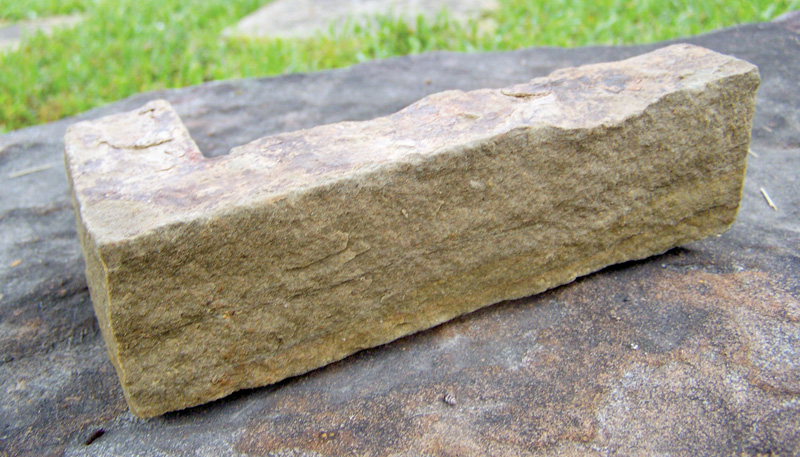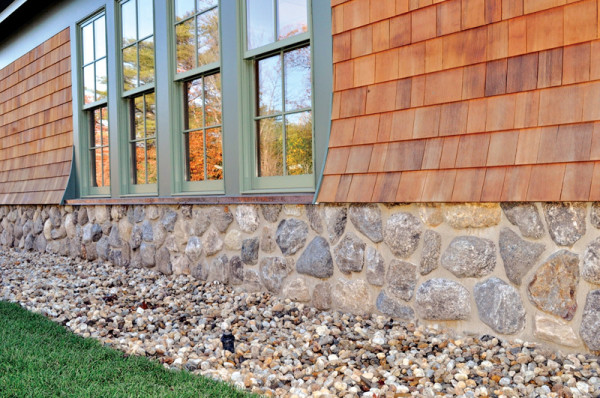
Stone veneer should be installed so that it has appropriate clearance from adjoining finishes and doesn’t project like a later addition to the façade. Here a foundation clad in The Stoneyard’s Boston Blend nests beneath flared shingle coursing. (Courtesy: The Stoneyard)
A modern concrete foundation or chimney may be a glaring eyesore on a historic house or an addition. Some applications are ill considered (linear strips of faux stone, say, over an original brick fireplace), but stone veneer may offer an affordable alternative. Whether the stone is natural or manufactured, the best veneers convey the depth and architectural richness of real stone in a form that’s far easier and less costly to install. Like face brick, stone veneer is not structural.
Natural stone veneers are real slices of authentic stone, in varieties like limestone or granite, or as generic fieldstone or river rock. Veneers are sometimes sold pre-arranged in panels, but for exterior applications, stones are likely to be delivered as individual pieces 1″–2″ thick.
Manufactured stone veneer (sometimes called “cultured” or “architectural” stone) is made of cast and tinted concrete. The most authentic looking are struck from molds taken from real stone. Whether real or manmade, the size of individual pieces can vary just as much as stone itself: from 4″–12″ high and up to 28″ long or more. Unlike real stone, though, veneers weigh in at 15 pounds per square foot or less.
SELECTING
Choosing a stone veneer is not like picking out a paint color, especially with a house that’s been part of the landscape for 80 years or longer. “Make sure you choose a stone that feels indigenous,” advises Jill Chase, who veneered the foundation of an addition to her 1920s home. If you have existing stonework inside or outside the house (or in the yard), try to match it in terms of size, scale, color, and shape.
Consult with a company that sells stone veneer in your area to see suitable options. Companies that sell nationally may sort offerings by region and can advise what’s most appropriate for your area.
For higher-style homes, consider patterns such as dressed stone (ashlar). If the house is more informal, such as a Pennsylvania farmhouse, a rubble-stone pattern may be more appropriate.
SORTING
Once you’ve received your order, go through the pallets carefully and lay the stones out in front of you. Mix them up by color and size, then select and stack the stones to create a pattern that is both balanced and slightly irregular. Avoid large or uneven spaces between stones. Choose the best-looking ones to use in the most visible places, such as the center of a chimney or beside the front door.
PREPPING
Ready the surface according to instructions supplied by the stone vendor or manufacturer. Many stone veneers can be installed directly over clean, structurally sound concrete or masonry that’s been roughened to accept new mortar, but all will probably require a vapor barrier. Other surfaces may need a layer of plywood and/or metal lath to hold the veneer.
Make sure that there is sufficient clearance between any existing cladding and the finished projection of the stone veneer.
INSTALLING
Use a thinset mortar recommended by the dealer or manufacturer. Mix only as much as you can use in 15 or 20 minutes. If the project has corners, start there. Some veneers come with L-shaped corner pieces, an improvement on nature. Working with a partner, set up the staging area so that one person can mix mortar and butter the back of the stone while the other places it. Scrape off any excess mortar between stones with a narrow trowel before proceeding to the next series of stones.
Even out and clean up the mortar using a stiff brush and large, porous plasterer’s sponge. Finally, clean the stone face carefully to remove residue. Use the same mortar to grout any gaps between the stones once the installation has cured.
FAMILIAR PATTERNS
All stones used for masonry are either rubble or ashlar. Rubble stone is composed of loose stones collected from fields or shorelines (e.g., “river rock”). Traditional rubble stone can be left in its natural shape or split to create roughly square edges.
Ashlar is a cut or worked (“dressed”) stone with face shapes that are square, rectangular, or trapezoidal. It is the most refined type of stonework, lending itself to thin joints between blocks. The visible side of the stone may be left untouched—or tooled, polished, or worked in a variety of decorative treatments. Both rubble stone and ashlar masonry can be installed in various patterns such as random, coursed, and split or broken.



